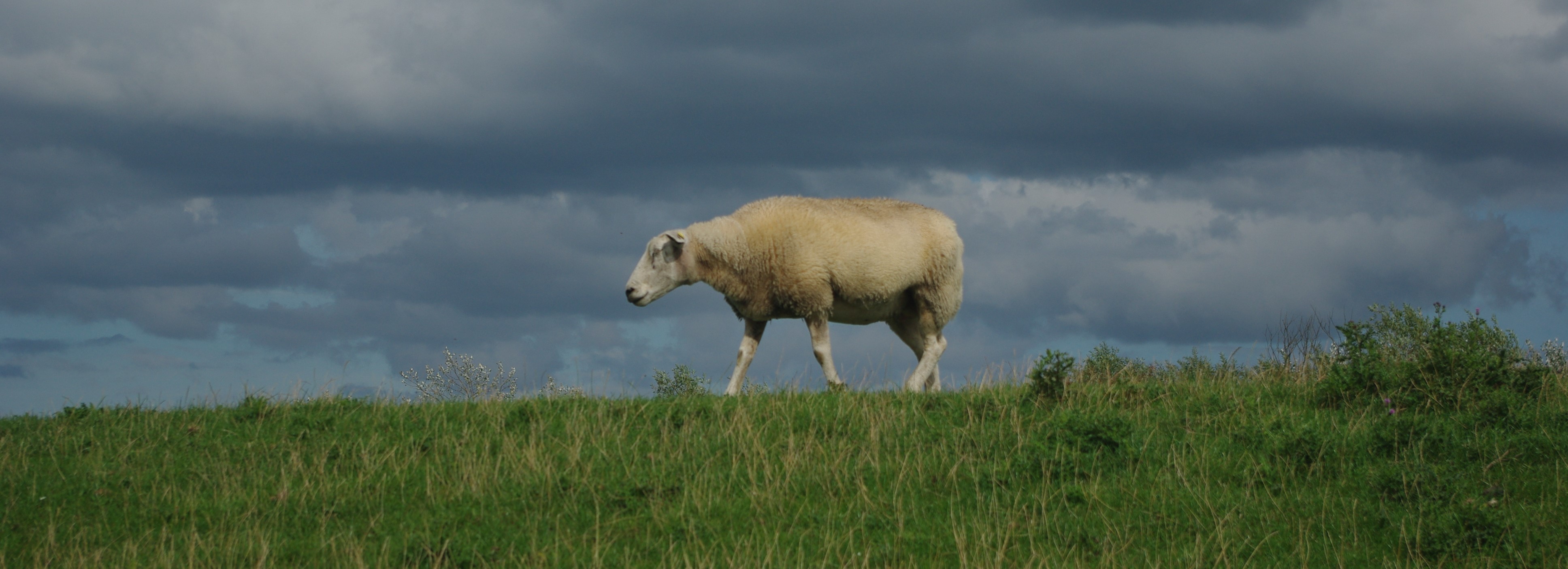
InsuranceGrass: how best to insure grassland sustainably against extreme weather events?
Duration: 01.04.2022- 31.03.2025
InsuranceGrass project homepage
Motivation
More than a third of the earth's land area is covered by meadows and pastures. They thus shape the landscape in many places, provide habitats for numerous animal and plant species and act as carbon sinks. The conservation of grasslands therefore plays an important role in combating climate change and preserving biodiversity. In addition to these non-marketable ecosystem services, grassland is used by farmers for livestock and fodder production.
Cow on alpine meadow
Climate change and the associated (compound) extreme weather events are causing damage to grasslands. Economic losses for farmers and a loss of ecosystem services are the result. The question therefore arises how to protect farmers against such financial damage and at the same time maintain the functionalities of grasslands for the preservation of biodiversity and the braking of climate change.
Objectives
The InsuranceGrass project investigates how formal, social and natural insurance solutions can be used to protect farmers against extreme weather events. In particular, the project will explore how the use of insurance solutions influences the management behaviour of farmers and thus the ecosystem services of grasslands. The project aims to answer four main research questions:
- What is the impact of extreme weather events on grasslands and its ecosystem services?
- What are the optimal natural and formal insurance solutions that can protect farmers from extreme weather events, and how do they work in combination?
- How can social safeguards, e.g. through community supported agriculture or payments for ecosystem services, be part of farmers' risk management?
- What effects does the (simultaneous) use of different insurance solutions have on the economic situation of grassland farmers and their ecosystem services over time?
Recommendations for insurance companies and policy-makers will be derived from the results of four work packages (WP), each one focussing on one of the above research questions. The overall goal is to present insurance approaches that provide sufficient insurance for farmers and at the same time promote the sustainable management of grasslands.
WP4: Social-ecological dynamics
At the UFZ we are implementing WP4, answering the fourth research question that integrates theoretical and empirical results from the other three WPs. An agent-based model is being developed to analyse the relationships between extreme weather events, the (simultaneous) application of different insurance types and farmers' management with regard to the resulting ecosystem services. The agent-based model is a bottom-up approach, i.e. the overall system dynamic comprises from the individual behaviour of its agents, in this case farmers. Thus, the model will explicitly incorporate the heterogeneity of farmers and consumers and their interactions. The results will allow us to evaluate the impact of different designs of insurances on farmers' risk management and to promote sustainable grasslands.
 Schematic representation of the agent-based model to be developed.
Schematic representation of the agent-based model to be developed.
Team
|
Prof. Dr. Birgit Müller
birgit.mueller@ufz.de |
Julia Kunkel
julia.kunkel@ufz.de |
Project partners & funding
| Institution | Contact |
| ETH Zürich Grassland Sciences |
Prof. Dr. Nina Buchmann
|
| ETH Zürich Agricultural Economics and Policy |
Prof. Dr. Robert Finger
|
| iDiv Biodiversity Economics |
Prof. Dr. Martin Quaas
|
The project is funded by the German Research Foundation and the Swiss National Science Foundation.


